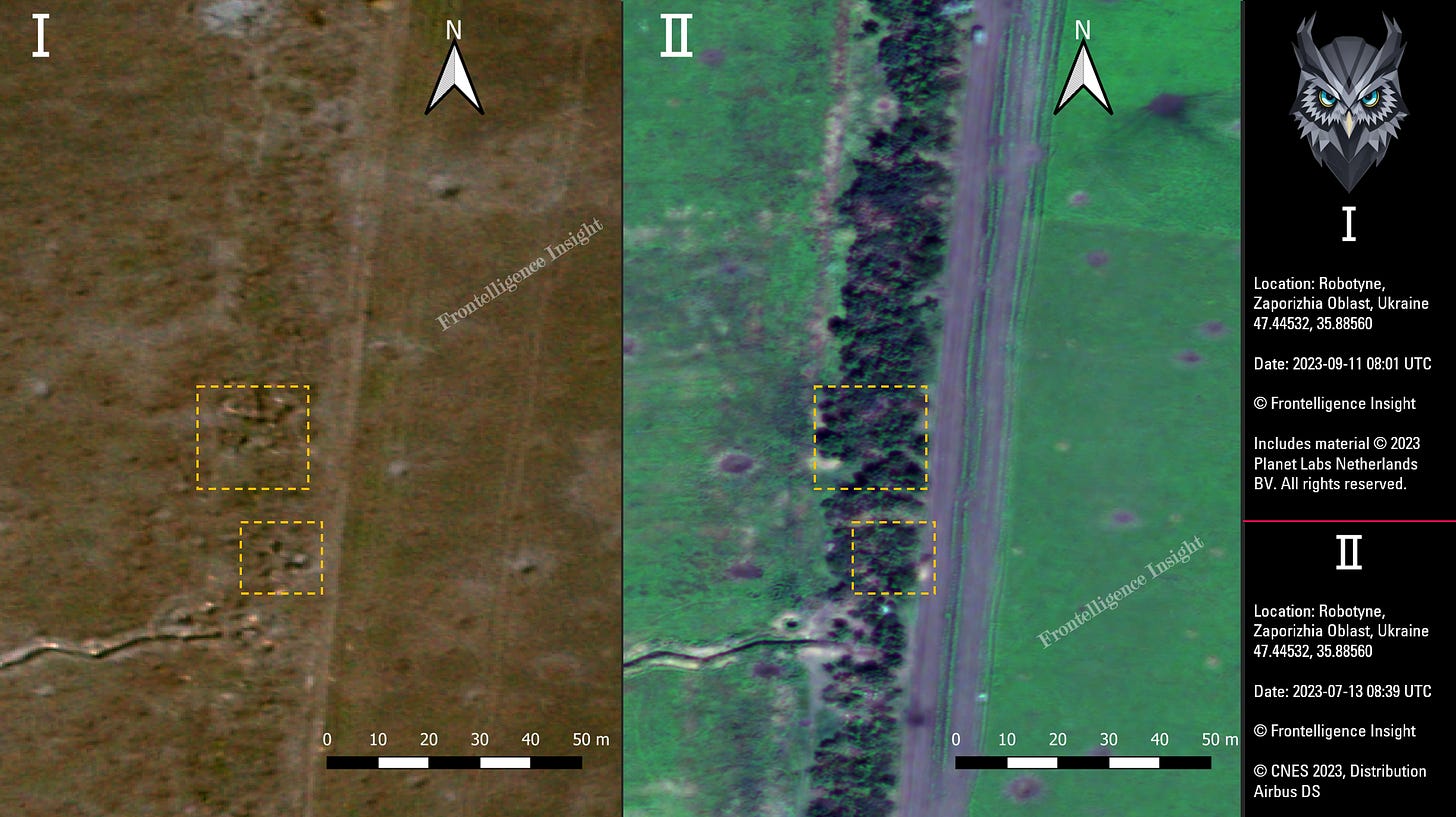Significance of Concealed Tree Line Defenses in the Counter-Offensive
A Tactical Analysis
One of the distinctive aspects of this war is the continuous surveillance of the battlefield, made possible to a significant extent by the widespread use of drones and, to a lesser degree, by satellites. At the outset of the war, there was a noticeable absence of camouflage and concealment among Russian troops, which contributed to the number of casualties during the initial stages. However, lessons have been learned, and by 2023, the Russian army has largely adapted to the new conditions of the war.
In this specific case, we would like to highlight a particular scenario in the close vicinity of Verbove, Zaporizhia Oblast, where significant counter-offensive actions were taking place. What initially appeared to be an ordinary tree line turned out to be a well-fortified and prepared Russian position. These concealed positions within the tree lines played an important role in the defensive preparations of Russian forces.
In Section One, which displays satellite imagery of the tree line on July 13th, it is evident that while there are some noticeable changes near the tree line, such as earthworks, the majority of positions remain concealed and not clearly visible.
In Section Two, which shows August 8th imagery, the impact of fighting and tree destruction reveals that Russian positions in that area are more extensive and prevalent than one might initially assume. This observation is particularly significant because the majority of analysts and journalists tended to concentrate on visible defensive lines in satellite imagery, often overlooking concealed positions. This oversight created the impression that there were vast, empty lands between the fortified lines.
In the final, third section depicting the situation on September 11th, we can finally discern a system of trenches and concealed individual positions along the tree line.
An important side note is that not all of these concealed positions were necessarily occupied continuously, as that would demand an unrealistic concentration of troops along the frontline. Instead, some of them might have functioned as observation posts, readily manned when a threat arose in that direction. This simulated 3D view provides us with an approximate understanding of the terrain and the line of sight from this tree line when viewed from above.
Let's take another look and conduct a brief comparative analysis. In this specific case, the attention of a viewer might be placed on the visible trench, while the actual concealed positions are barely recognizable, creating a misleading impression of the defensive layout in this sector. However, once the foliage and trees have been removed, the defensive positions become clearly visible.
In general, these positions can be identified by drones with relative ease, especially when they are occupied. However, there have been instances where such positions were either not detected, only partially discovered, or assumed to be unmanned, leading to an unpleasant surprise for approaching Ukrainian forces.
This segment of the video, captured by a Russian drone in the approximate area of the tree line, depicts an attack on Ukrainian vehicles moving across the field. It's noteworthy that the tree line appears unremarkable and is not easily distinguishable as manned or fortified.
Conclusions
Following the humiliating Russian retreat from Kharkiv and the unsuccessful defense of the right bank of the Dnipro River, it created an impression that Russian forces were incapable of managing effective defensive systems to resist Ukrainian forces efficiently.
When visible fortified lines were meticulously mapped by volunteers and analysts, many viewers and observers mistakenly inferred the existence of extensive unoccupied spaces between these lines of fortification. They also rightly observed that these trenches couldn't realistically be fully staffed and must have been thinly distributed.
As events unfolded, it became evident that these seemingly empty areas were, in fact, fortified and prepared for defensive purposes. Meanwhile, the remaining spaces were heavily mined and under constant drone surveillance, enabling timely alerts and adjustments for artillery fire or loitering munition against approaching troops.
This can also partially explain why we do not witness a rapid breakthrough after Ukrainian forces have breached the visible line of defense, which includes anti-tank trenches and dragon's teeth. Ukrainian troops still have to contend with enemy positions within numerous tree lines, as well as the threats posed by loitering munitions, artillery, mines, and helicopters.
The continuation of offensive progress will heavily depend on the availability of artillery ammunition for advancing troops, as it remains the primary means to suppress enemy defenses or compel them to withdraw. Additionally, the availability of reserves prepared to advance and assume positions will play a crucial role.







